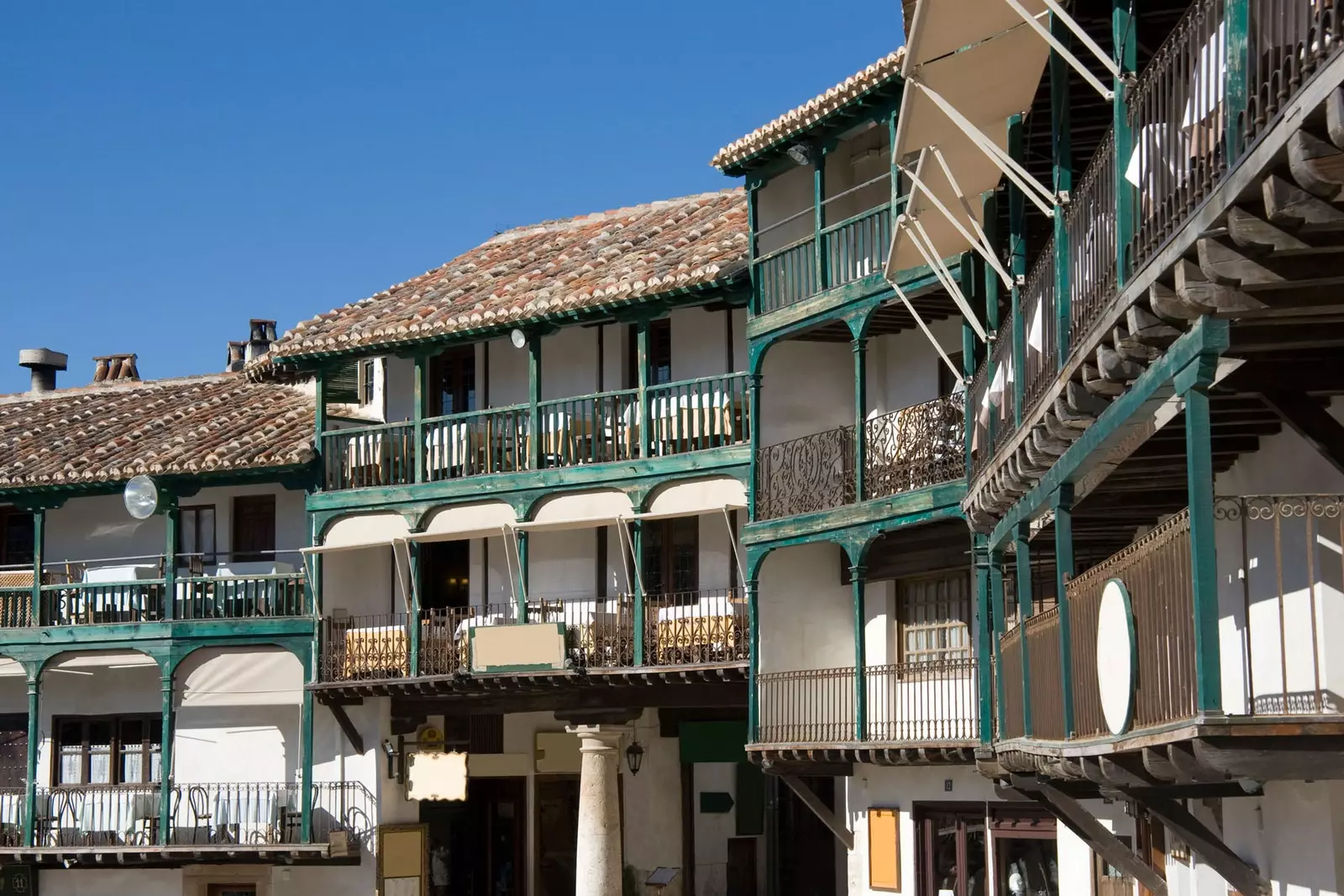
Balconies in the Plaza Mayor of Chinchón
HISTORICAL CITY IN THE FOOTSTEPS OF GOYA
Chinchon It is a town located in the area of the Vega del Tajuna river. Although there are data on its existence since the Neolithic, its first important step was in the 8th century with the construction of the St. Andrew's Church, which has a fascinating Romanesque apse.
Chinchón gradually entered the maps until the arrival of the Catholic kings, that they grant the Lordship of Chinchón to the Marquises of Moya, and they move to the town.
The children of the Marquesses of Moya they become earls in 1520, transforming the town into the county it still is today. There has always been a lot of relationship with the crown.
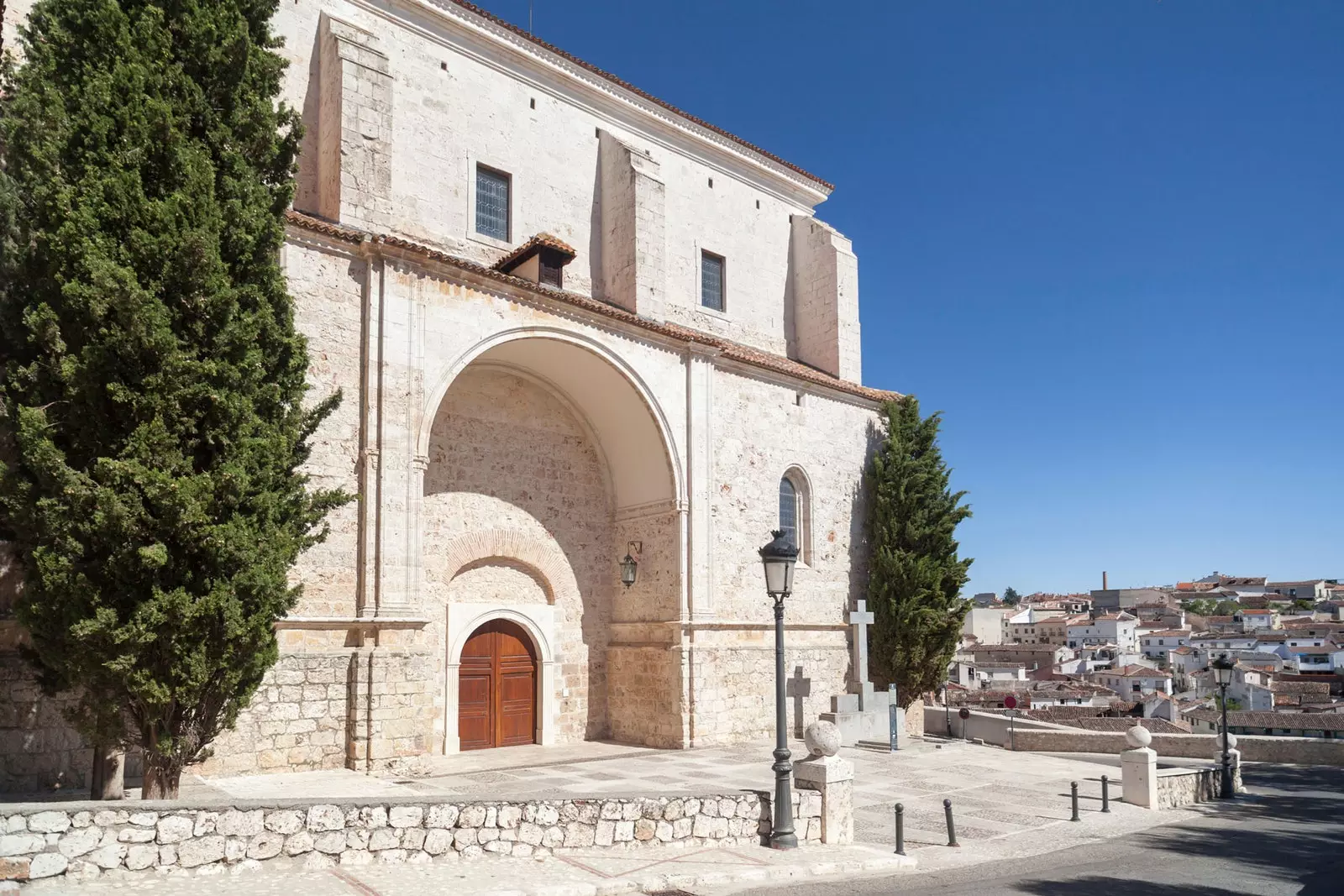
Church of Our Lady of the Assumption
An immense jewel that Chinchón hides is Goya's painting that resides in Our Lady of the Assumption, proof of the passage of the House of Bourbon through Chinchón.
In addition, it is said that in Chinchón the artist painted one of his great masterpieces, The Countess of Chinchon, María Teresa de Borbón y Vallábriga, granddaughter of Felipe V and wife of Godoy, favorite of Carlos IV.
Goya has a lot of contact with his father, the infante Don Luis, a great patron of the arts, which leads to characters like the painter having that link with the town.
The Third Earls are the ones who build the castle of the counts and finish the Church of Our Lady of the Assumption.
Subsequently, the fifth earls will be the ones who build the convent of the Poor Clares and the current tourist hostel.
Chinchón walks through the Baroque until Philip V in the midst of the War of the Spanish Succession. Felipe V, when he passed through Chinchón, would be hailed as king, a loyalty that later led to the granting of the title of "Very Noble and Very Loyal" and to the purchase of Chinchón, which would go to the House of Bourbon
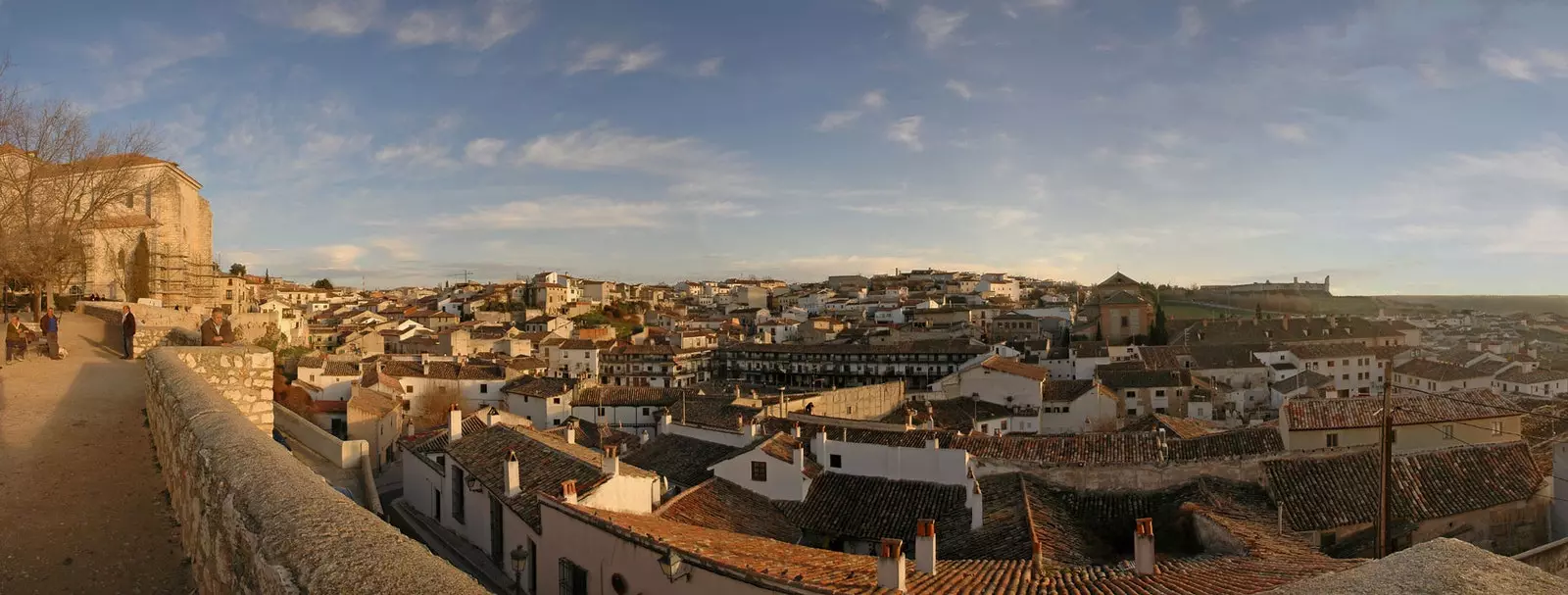
Chinchon
In fact, Goya's brother was a priest and the Count of Chinchón brought him in as chaplain. Goya took refuge in Chinchón for a few years, where he bought a house and fled the war against the French.
With Alfonso XIII appears the title of city and the products of Chinchón, such as anise, they begin to leave our borders, thanks also to a society of harvesters that has been in operation since the War of Independence.
The Chinchon square It is an example of popular architecture, which came out of nowhere and did not go unnoticed by the Heritage, which in 1974 protected not only the square but the entire old town of Chinchón.
From there, the tourist boom pushed an important development of the restoration, maintaining the essence of the medieval towns of the past, turning Chinchón into the perfect weekend getaway.
WINE TOURISM WITH MOVIE STARS
Located between vineyards, Chinchón is an incipient destination indicated for lovers of wine tourism. Proof of this are the guided tours that some of its wineries offer through the networks and that, sometimes, they even have a waiting list.
But without a doubt, the ** Bodega del Nero ** is one of the few wineries that still maintains the artisanal winemaking process.
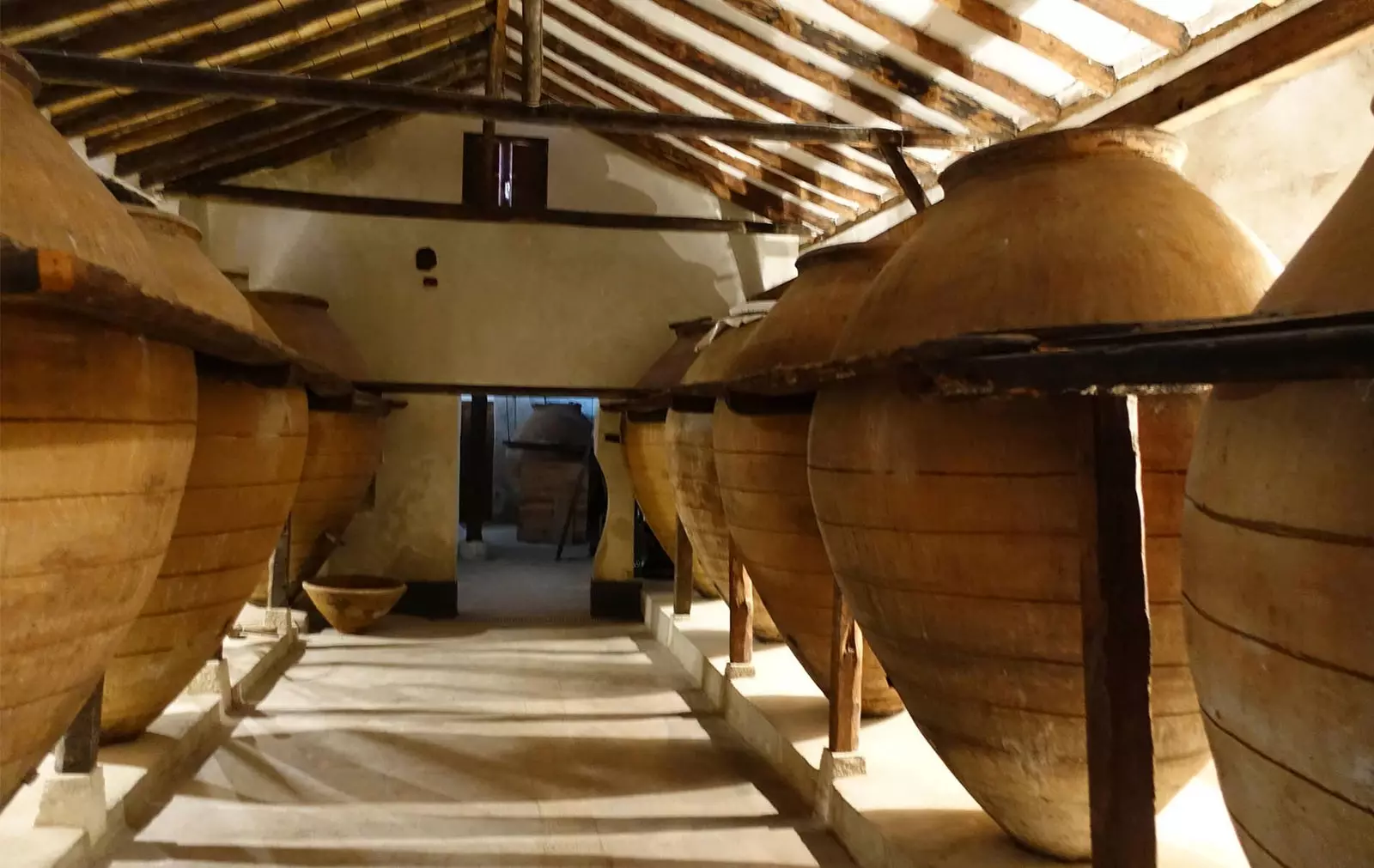
Bodega del Nero, one of the few that still maintains the artisanal winemaking process
Nowadays, Alvaro and Roberto del Nero, fifth generation of the family, are at the helm. Roberto tells us that the winery was opened in 1870 by his great-great-grandfather Alfredo, when the wine was still sold in pig skins.
In 1955 the film was shot Around the World in 80 Days, with David Niven, Shirley Maclaine and Cantinflas, who chose these wineries as the perfect place to taste some wines between filming and filming.
"Bullfighter Luis Miguel Dominguín and the actress Lucía Bosé, who also worked on the film, frequented the winery and it was common to see them around here," says Roberto.
Although it would be the third generation of the family that would be key. "Grandpa Jesus, who is still alive and became mayor of Chinchón, is to blame for us let's ferment the red wine in the clay pots that can be seen in the cellar" he comments.
"My grandfather always said that in the mud a different and more traditional wine is made. And this is what has led us to win awards", he explains proudly.
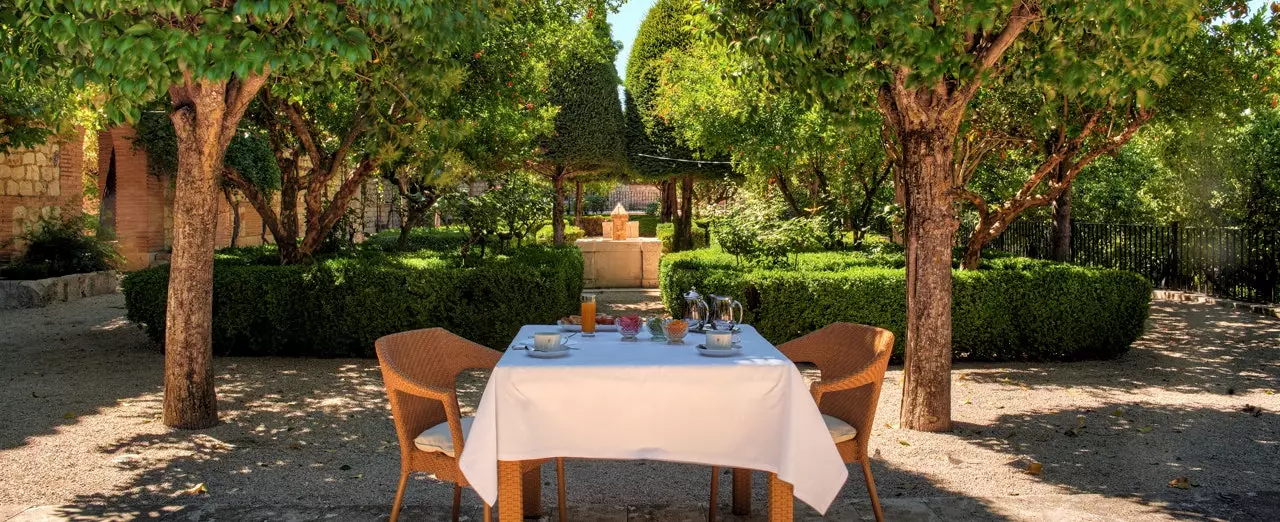
The Parador de Chinchón is an old convent from the 17th century
FIVE OBLIGATORY STOPS IN CHINCHÓN
_The Church of Our Lady of the Assumption (Don Florencio Street, 3) _
It dates from the 16th century and all the counts of Chinchón are buried under its altar.
Inside you can find a painting by Goya, The Assumption of the Virgin, a commission that Goya received, it is said to alleviate the damage of the War of Independence in the church.
Goya paints the masterful painting that also captures that anticlerical sentiment so his.
The National Parador _(Hertos Street, 1) _
Is about a former Augustinian convent from the 17th century of spectacular conservation that hides in its interior a beautiful cloister.
It served as lodging but also as a teaching center and even as a court. Old wooden doors, silence and a spectacular garden. Its gastronomic offer is affordable.
Old Town and Square
Possibly the biggest tourist attraction in the town is getting lost in the streets of Chinchón and look at the details that can be found among the steep cobbled streets.
Centennial houses that preserve the original facade, bakeries that since 1941 make figures of bread authentic works of art and, of course, the Plaza Mayor.
The latter, surrounded by arches and balconies, is attentively observing these days its particular version of the ordeal of Holy Week , an event in which the inhabitants of Chinchón become involved.
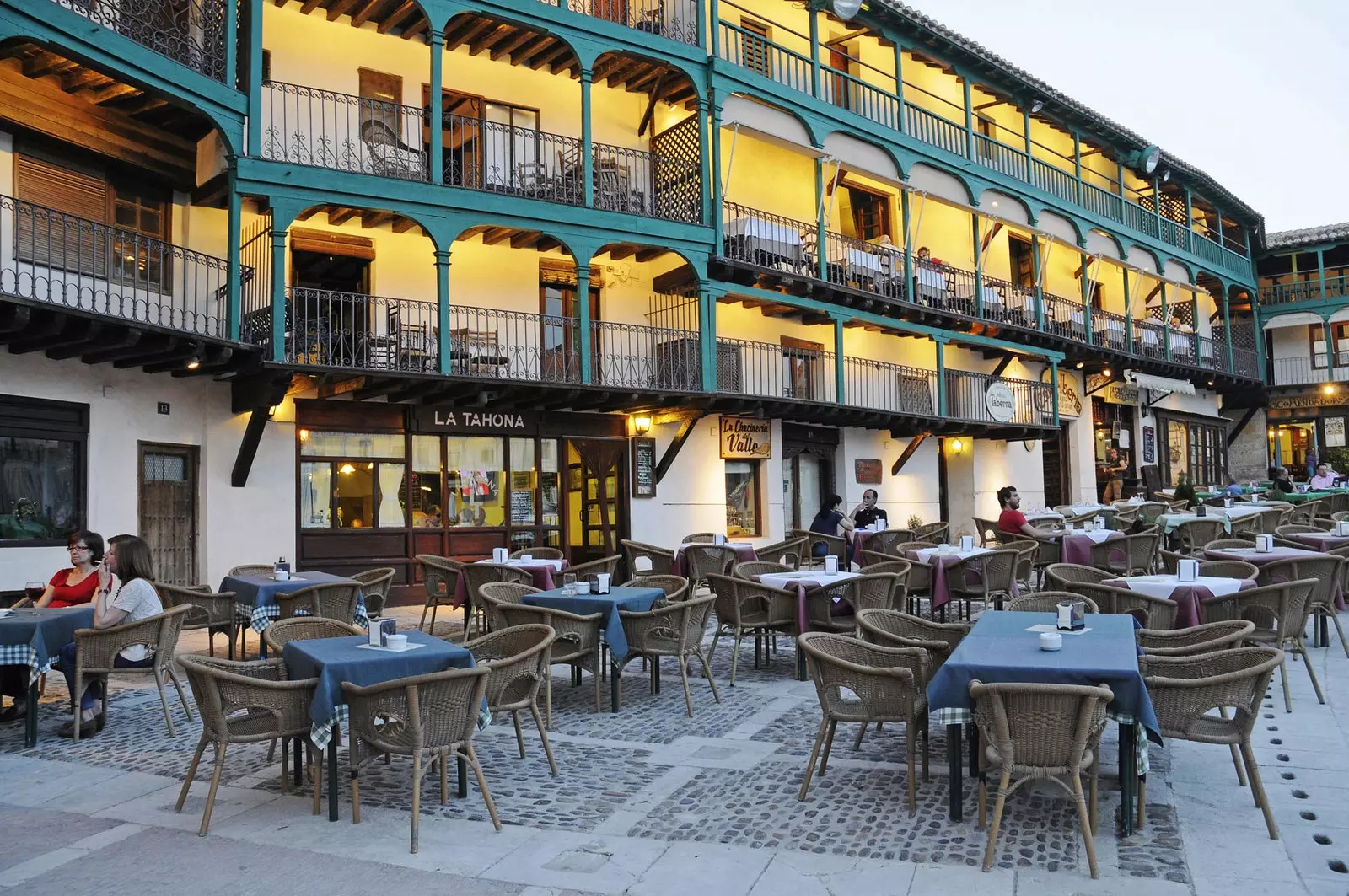
Main Square of Chinchon
Castle of the Counts
Renaissance in character, dates from the 16th century and it was built by order of the third counts of Chinchón. The War of Succession was a tremendous blow as it was quite destroyed.
_Convent of the Poor Clares (Abapiés street, 37) _
From the end of the 16th century, it was built at the time of the fifth Counts of Chinchón, whose remains rest right there.
Its imposing cloister and its Herrerian-style church make it a great tourist attraction. You enter through the door, you cross a patio with flowerpots in the center and the smell of the oven already becomes intoxicating. Mantecados, muffins, nougat... those are the other treasures.
PINCHOS, TABLE AND GENEROUS RATIONS
It is time to demystify Chinchón as an expensive tourist destination, mainly in terms of gastronomy.
Can be found as many prices and qualities as cobblestones on the ground ; but I will tell you that it does not share the ideals of low cost that destroy our quality tourism so much.
Yes there is a common denominator: Abundant and quality. We could outline two plans:
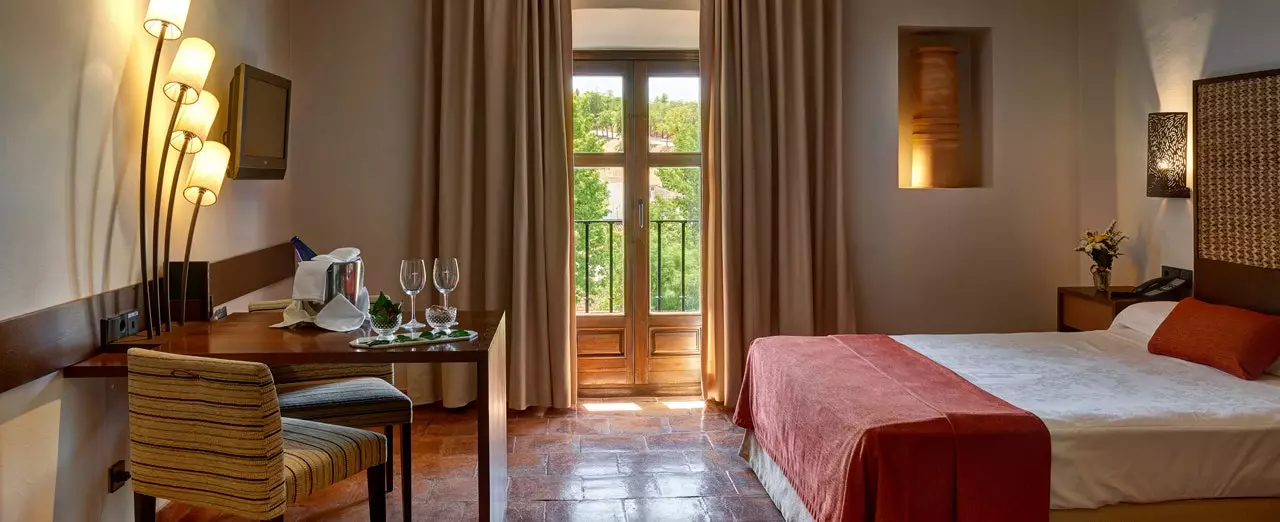
The Chinchón Parador, the best accommodation for a complete experience
1. Table and tablecloth.
Without a doubt, sitting at the table in Chinchón is only suitable for lovers of slow food. There are many restaurants that offer the great specialties of the area.
An obligatory stop is the migas del meson Wine Caves _(Calle Benito Hortelano, 13) _, a restaurant that takes you inside a tool house and where wine plays a major role.
The protagonists in Chinchón are the great barbecues, which can be found in places like the balcony _(Plaza Mayor,12) _ or The Ville _(Plaza Mayor, 45) _, something more modern, where lamb and some homemade dessert play in another league.
A complete experience? The accommodation in Hostel , definitely.
two. Tapas and pinchos.
The Main Square of Chinchón shelters among its arches a good handful of bars and restaurants where tapas, pinchos and portions they delight both visitors and locals, and they are little detract from the chair and tablecloth restaurants.
Goya's Arch _(Plaza Mayor, 31) _ is the perfect 'hunger remover' that welcomes you with a bar of skewers (like the ones in the Basque Country) perfect for pairing a local wine with a mini vegetable burger or a sobrassada and egg sandwich.
If you're lucky (like us), you might be able to try the enormous torreznos and the migas of The Commander _(Plaza Mayor, 20) _ with a very cold beer, obviously.
They are two examples, but going 'around the ring' is quite an experience. The Town Crier's House, Mesón Virreyna, La Repesca...
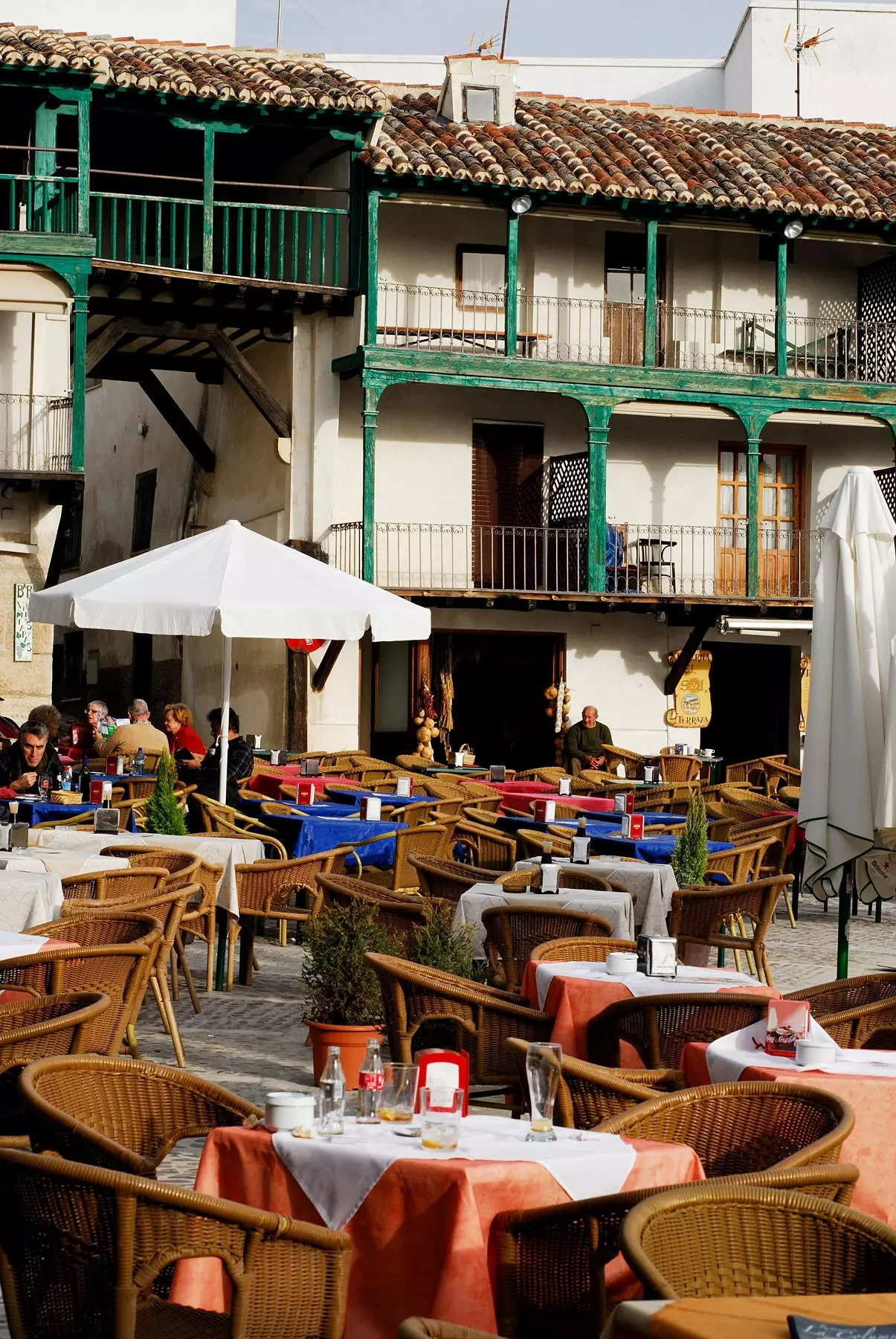
The tapas, pinchos and raciones of the bars and restaurants of the Plaza Mayor attract both visitors and locals
BONUS TRACK: CURIOUS FACTS ABOUT CHINCHÓN
The 4th Countess of Chinchón , Viceroy of Peru, she was the character who introduced the cinchona in Europe through the Jesuit ships. In fact, the cinchona root is called 'chinchona' (cichona) in honor of this great woman.
It seems that in 1498 there was an epidemic of mosquitoes and the population of Chinchón moved to the current location, a higher area of great strategic and defensive value. They had no qualms about moving the entire town.
Chinchón was visited by the Catholic kings up to two times. Lope de Vega and Goya They were also seen (and even resided) in the Madrid town.
Orson Welles He lived for a time in Chinchón. In fact, he came to want to be buried in the town. He was cremated and his ashes are said to rest in Ronda.
The actor Pepe Sacristan, In addition to being a native of Chinchón, he organizes a theater contest in the town.
Around the World in 80 Days won five Oscars. The square where Cantinflas 'fighted' It was the main square of Chinchón, which was transformed into a bullring and had the collaboration of more than 6,000 extras, almost all of them residents of the town.
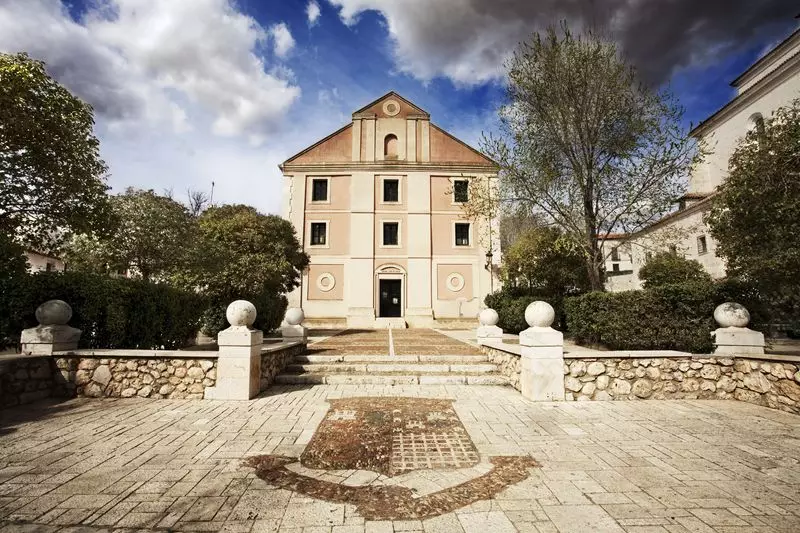
Lope de Vega Theater in Chinchon
